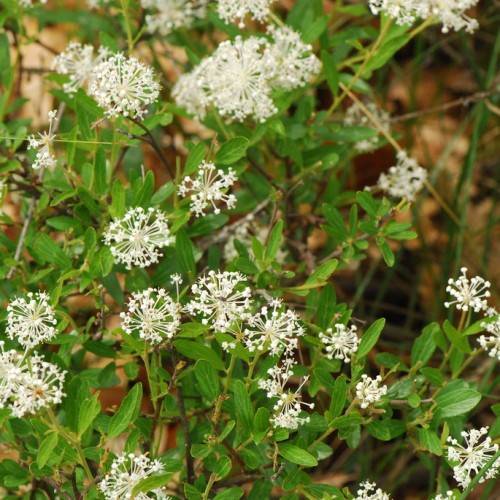
inland New Jersey tea
Ceanothus herbaceus
Also Known As - Jersey TeaCycle:
Perennial
Watering:
Minimum
Hardiness Zone:
4 - 8
Flowers:
Flowers
Sun:
Full sun
Soil:
Sand, Loam
Leaf:
Yes
Growth Rate:
Low
Maintenance:
Low
Drought Tolerant:
Yes
Salt Tolerant:
Yes
watering
This species of plant grows best when watered deeply and infrequently. Water the Inland New Jersey Tea firmly once a week, making sure to soak the soil deeply. On really hot days it may need more frequent watering. Make sure to allow the soil to dry out a bit between watering. It will benefit from a good soaking once a month, tending to its deeper roots.
sunlight
Inland New Jersey Tea (Ceanothus herbaceus) plants should receive at least 6 hours of direct sunlight each day, though they will tolerate a little less in shady locations. The best time of day for these plants to receive the sun is early in the morning and late in the afternoon. However, they can also be planted in more open areas where they will receive full sun all day long. They can also do well in partial shade, but should not be in complete shade. They need to be situated in areas that have well-drained soil and avoid areas that are prone to flooding.
pruning
For Inland New Jersey Tea, it is best to prune in the late winter or early spring, before the growth of new buds appears. Start by removing dead or damaged branches. Cut the branches back to the healthy wood and as close to the trunk as possible. Be sure to make clean cuts. You can also thin the shrub back to encourage air circulation as well as removing any crossing or rubbing branches that could cause damage to the plant. When needed, you can lightly prune the sides of the shrub, maintaining an even shape. Do not prune more than 1-third of the plant's total foliage at any time.
